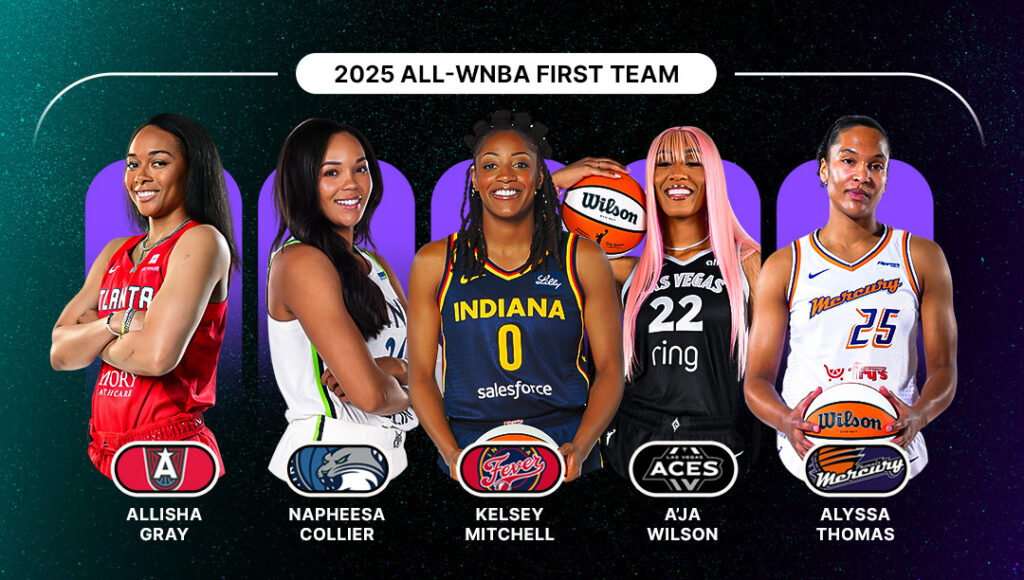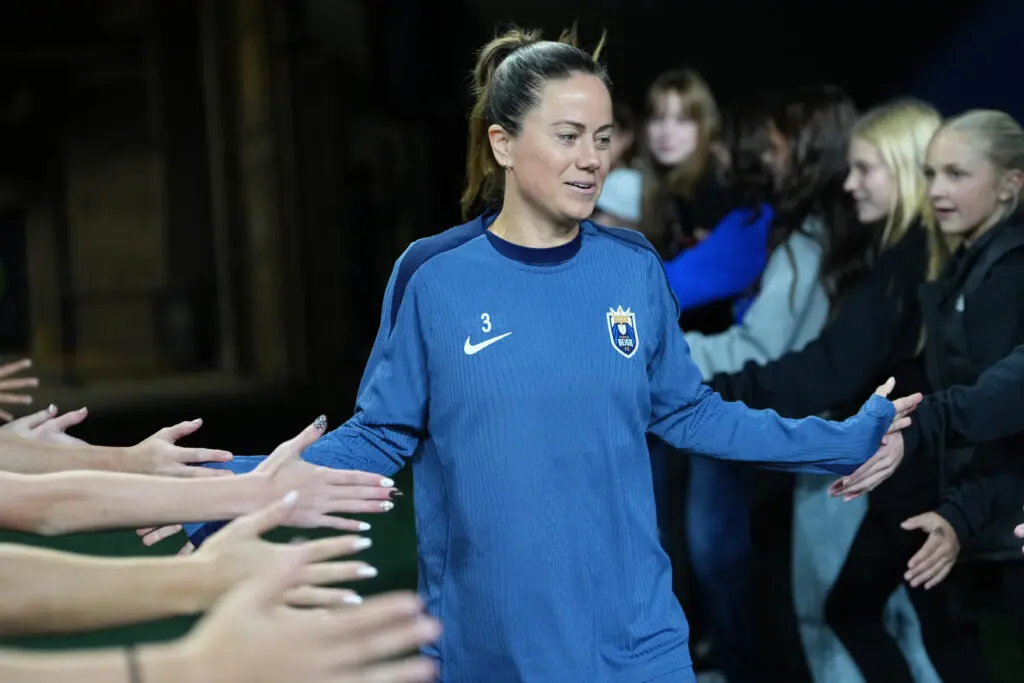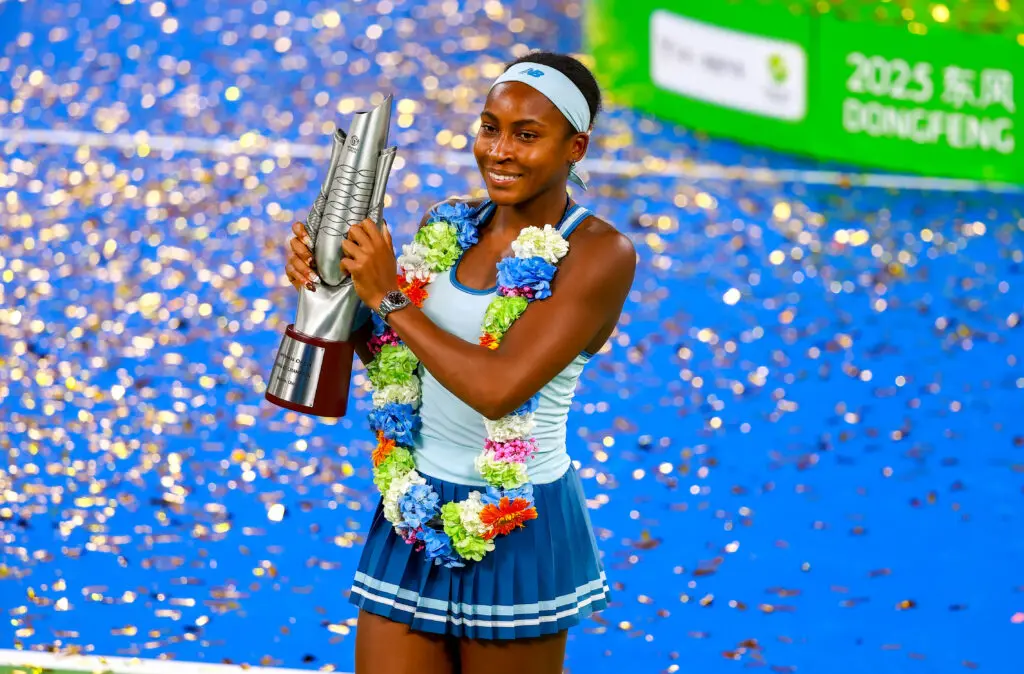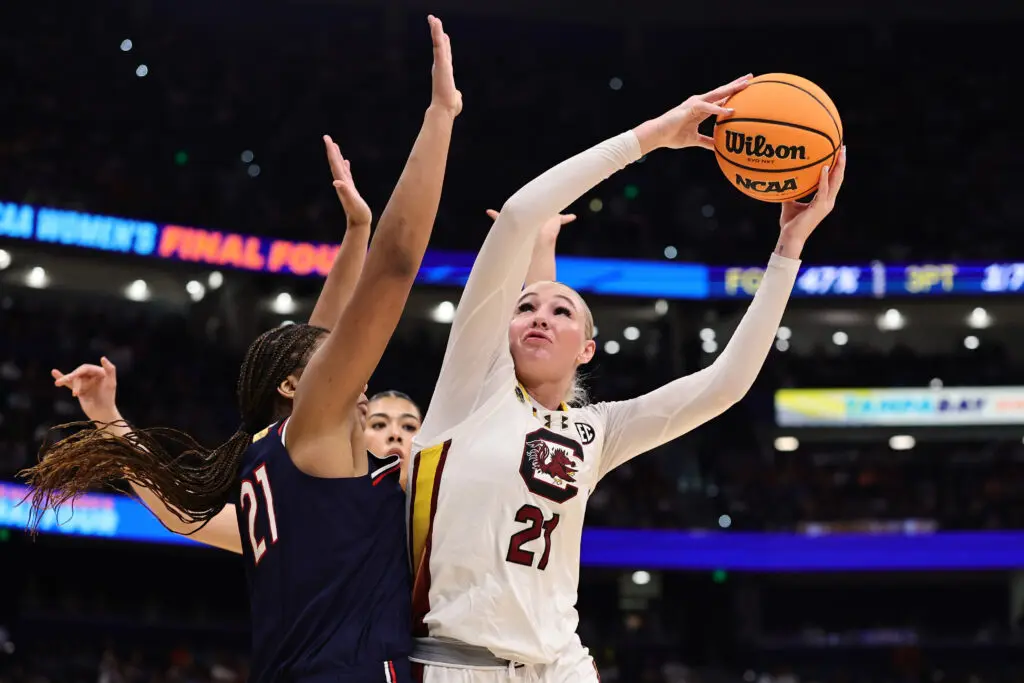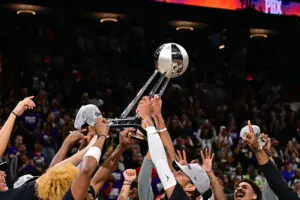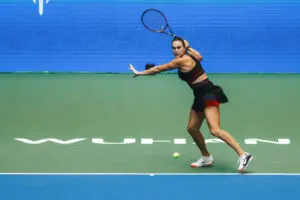With the dust settling after the U.S. women’s national team’s disappointing Round of 16 exit from the 2023 World Cup, there has been a necessary focus on what went wrong. Coaching, talent development, mentality and fitness have all been put under a microscope, with the USWNT acting as a mirror for many perceived shortcomings at both the senior and youth levels of soccer in the United States.
The fallout will continue for months to come, and in many ways, the USWNT will be better off not trying to sugarcoat the cracks in their foundation. But there is also ample reason for hope for the USWNT’s future that goes beyond their four major tournament games this year.
The young USWNT core is ready, and hungry
Players 23 years old and younger played a lion’s share of the USWNT’s minutes at the 2023 World Cup, with the intention that those players will be with the team for a long time. Naomi Girma, 23, was arguably the USWNT’s best player throughout their tournament. Sophia Smith, 23, and Trinity Rodman, 21, were also at the center of the team’s harsh learning experience, which should only lead to growth.
Ideally, they’ll also be joined by 25-year-old Mallory Swanson and 23-year-old Catarina Macario in future tournaments. Emily Fox, 25, also grew into her responsibilities in 2023. The USWNT committed to the future alongside the present during this World Cup cycle, and while the dividends didn’t pay off immediately, the foundation for deep runs in the future is there.
This is good news, because this next generation of talent wasn’t guaranteed. In hindsight, the 2023 USWNT World Cup roster is a reflection of the challenges the team had with identifying talent for a number of years, with most players either in their early-to-mid 30s or their early-to-mid 20s. The USWNT’s small “lost generation” is an indictment of the rigidity of their talent identification pipeline. But the pipeline hasn’t made the squad over-commit to an aging golden generation, which is a testament to the resiliency of the player pool.
Veterans like Alex Morgan have more to give to the U.S., but they also want to leave the team better than they found it. The bridging of that gap is still an unfinished project, but not one without progress.
The talent pipeline is evolving
In the wake of the USWNT’s early exit, attention naturally turned to U.S. Soccer’s process of identifying and developing emerging talent as the U.S. attempts to maintain a competitive edge. There’s legitimate reason to be concerned — the transition to the U.S. Soccer Development Academy system hasn’t been without hiccups — and the pay-to-play nature of many top clubs cuts out entire demographics of talent.
There has been similar concern of college soccer’s place in an evolving landscape. Other countries are instead placing young players into professional environments with more opportunities to develop at a higher rate. Many of the top soccer minds in the U.S. sit in entrenched NCAA jobs, but the collapsing conference system, recruiting limitations and rule differences make four years with a college team seem less and less feasible for players with international-level ambitions.
Silver linings do exist, however. Increasingly, players are making the jump to the pros after one or two years spent developing at the NCAA level. Portland’s Sophia Smith, Kansas City’s Michelle Cooper and PSG’s Korbin Albert are good examples of young, talented players understanding when it’s time to move up a level after getting their start in college.
We’re also seeing more teenagers forgo college entirely, aided by the NWSL’s new U18 entry rules. Allowing under-18 players to sign directly with clubs not only allows players to develop with professional first teams from a young age; it also gives them the option to avoid the NWSL college draft, which has been a sore subject for top talent in recent years.
Players now have the option to commit to a professional career before turning 18, go to college for a few years or, upon turning 18, look abroad for other opportunities. A healthy NWSL will always be important to the USWNT’s development, but the U.S. should not be afraid of diverse club experiences.
What matters most is that players have options, and the increasing professionalization of the game both in the U.S. and abroad empowers them to take control of their careers and not depend too much on U.S. Soccer’s youth system. If young NWSL stars like Jaedyn Shaw and Olivia Moultrie break into the U.S. first team early, they will have that evolution to thank.

The players are more versatile than current coaching
Injuries put the USWNT attack in a difficult position in 2023, and it showed in their results. Vlatko Andonovski’s vision of his two wingers slashing inside in front of a false No. 9 never fit the skill set of longtime U.S. striker Alex Morgan, and the wingers’ inability to get high and wide when reacting to Morgan’s strengths contributed to the USWNT’s early exit.
But concerns that U.S. players inherently lack creativity doesn’t necessarily hold up when you look at the breadth of their work outside of Andonovski’s system. What happened had more to do with players working against their creative instincts rather than not having those instincts in the first place.
A good example of this dichotomy is Washington Spirit and USWNT defensive midfielder Andi Sullivan. Sullivan is an incredibly versatile player in her club environment, with the ability to push forward box-to-box, sit in defensive midfield spaces and even join the backline. She’s a smart, understated player who can control games at the club level. But when asked to fill the exact role Julie Ertz left behind in the USWNT’s defensive midfield, she looked completely out of her depth.
It would be easy to come to the conclusion that Sullivan simply didn’t have the mentality necessary to succeed at the international level, or that she’s underdeveloped compared to her European counterparts. But the moment Andonovski switched to a double-pivot midfield, with Emily Sonnett handling defending in space against Sweden in the Round of 16, Sullivan became the player NWSL fans know her to be.
Sullivan and Sonnett looked very comfortable in the midfield against the eventual semifinalists, going head-to-head with a team that has given the U.S. fits in recent years. That Sullivan is just one example of how a new coaching perspective changes the USWNT’s chances indicates the true cracks don’t always lie at the player level. U.S. players won’t always look the same as the generations before them, but that makes them no less formidable.
Claire Watkins is a Staff Writer at Just Women’s Sports. Follow her on Twitter @ScoutRipley.

